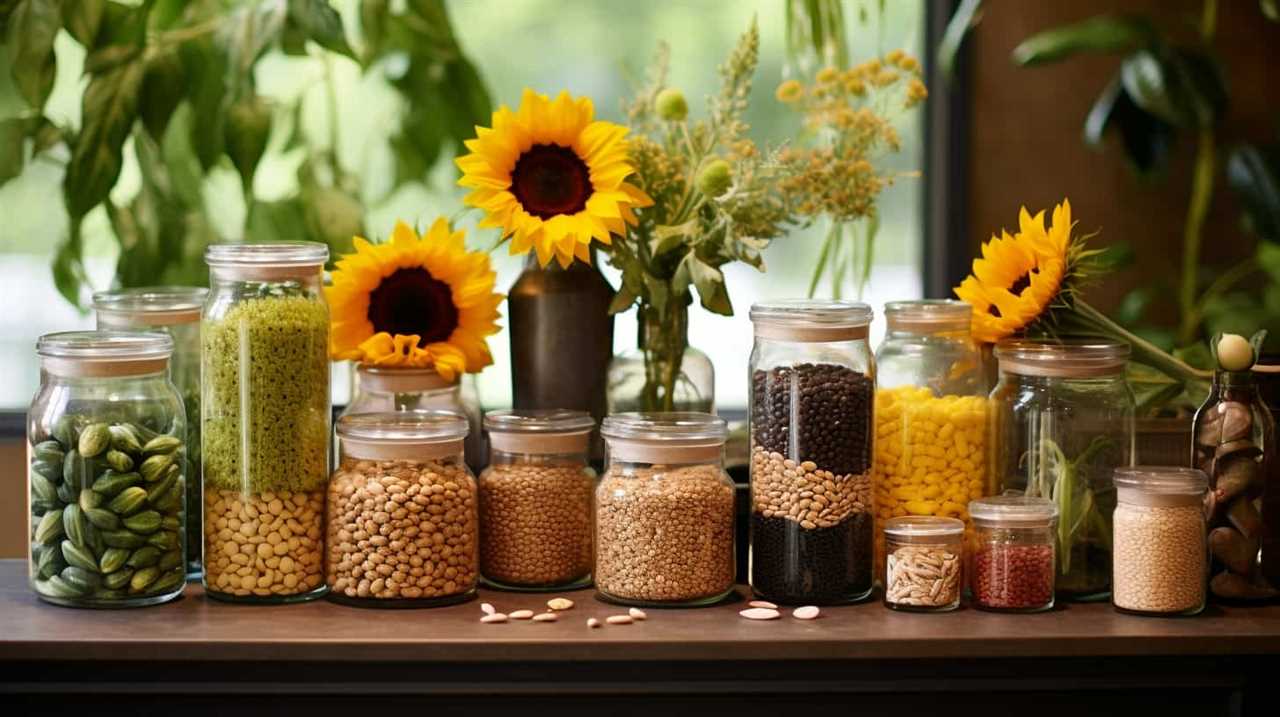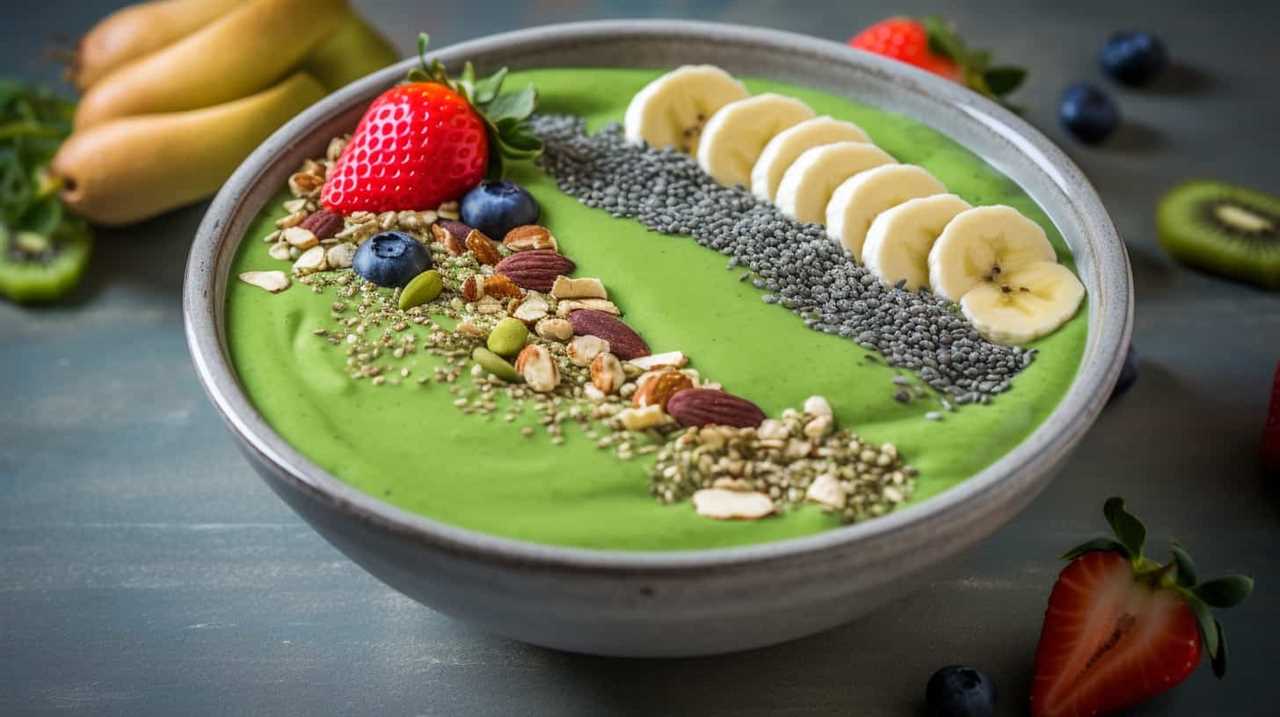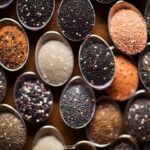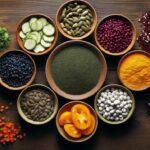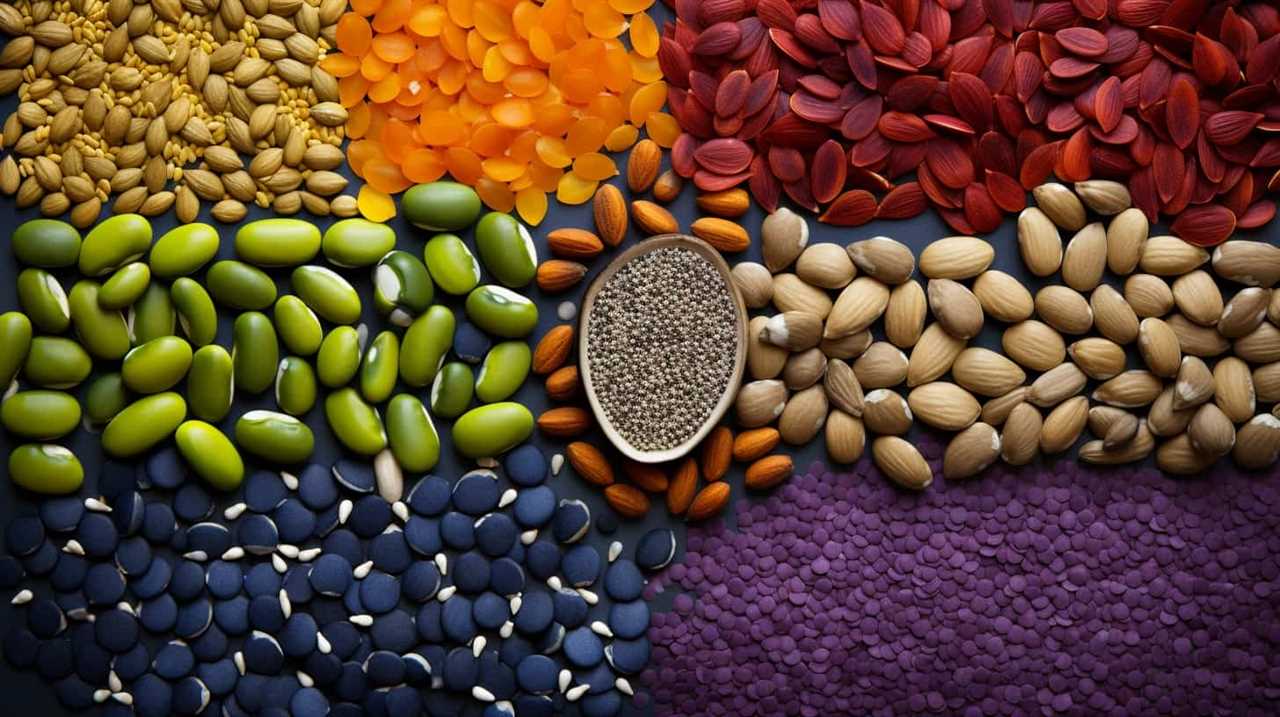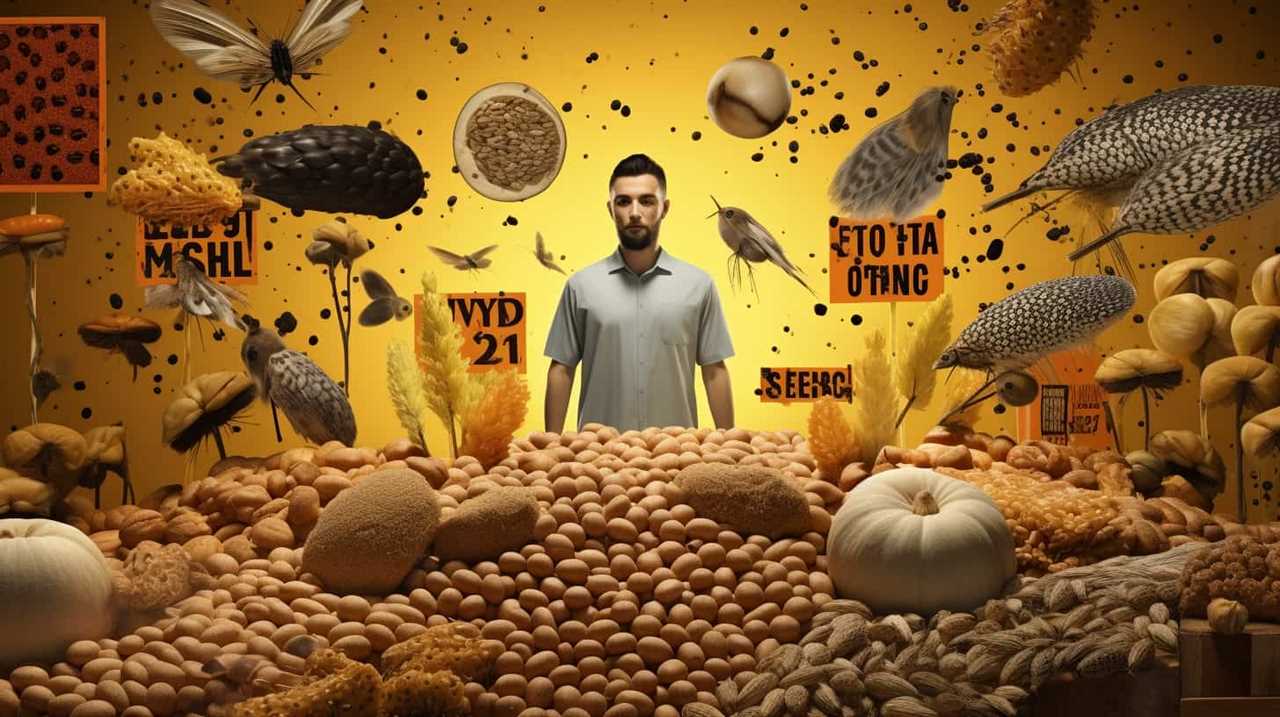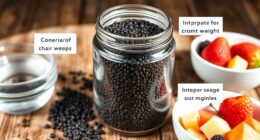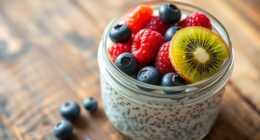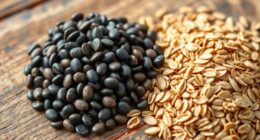Do you find yourself caught in a dilemma when choosing between the nourishment chia seeds offer and the health advantages of chai tea? Fear not; we have just the solution! In this piece, we’re going to explore and compare the fiber and omega-3 fatty acid content present in both these nutritional powerhouses.
Additionally, we’ll provide you with practical ways to incorporate chia seeds and chai tea into your diet.
So, sit back, relax, and let us guide you on your journey to a healthier lifestyle!
Key Takeaways
- Chia seeds are packed with nutrients, including fiber, protein, omega-3 fatty acids, and antioxidants.
- Chai tea is rich in antioxidants, spices aid in digestion, promotes gut health, improves heart health, and provides a natural energy boost.
- Chia seeds are an excellent source of dietary fiber, containing 34.4g of fiber per 100g, making them a great choice for boosting fiber intake.
- Chia seeds are one of the best plant-based sources of omega-3 fatty acids, while chai tea does not contain significant amounts of omega-3s.
Nutritional Benefits of Chia Seeds
Chia seeds offer a multitude of nutritional benefits that contribute to overall health and well-being. These small but mighty seeds are packed with nutrients, including fiber, protein, omega-3 fatty acids, and antioxidants.
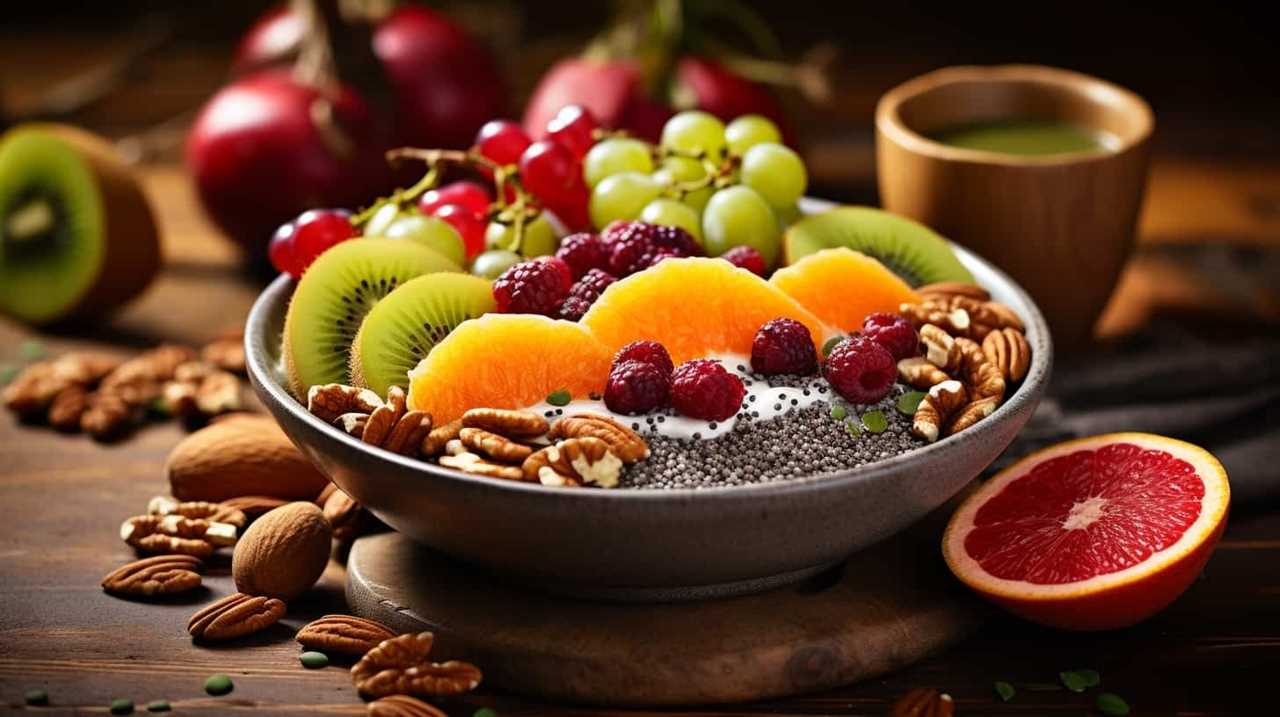
The high fiber content of chia seeds promotes healthy digestion and can help regulate blood sugar levels. Additionally, chia seeds are a great source of plant-based protein, making them an excellent choice for vegetarian or vegan diets.
The omega-3 fatty acids found in chia seeds have been shown to support brain health and reduce inflammation in the body. Chia seeds also contain antioxidants, which help protect the body against free radicals and oxidative stress.
Incorporating chia seeds into your diet is easy, as they can be added to smoothies, yogurt, or used in chia seed pudding recipes. Furthermore, chia seeds can be combined with chai tea spices to create a delicious and nutritious beverage that provides the benefits of both ingredients.
Health Benefits of Chai Tea
Now let’s explore the numerous health benefits that chai tea offers. Chai tea, a popular beverage originating from India, isn’t only delicious but also packed with potential health benefits. Here are five reasons to incorporate chai tea into your daily routine:
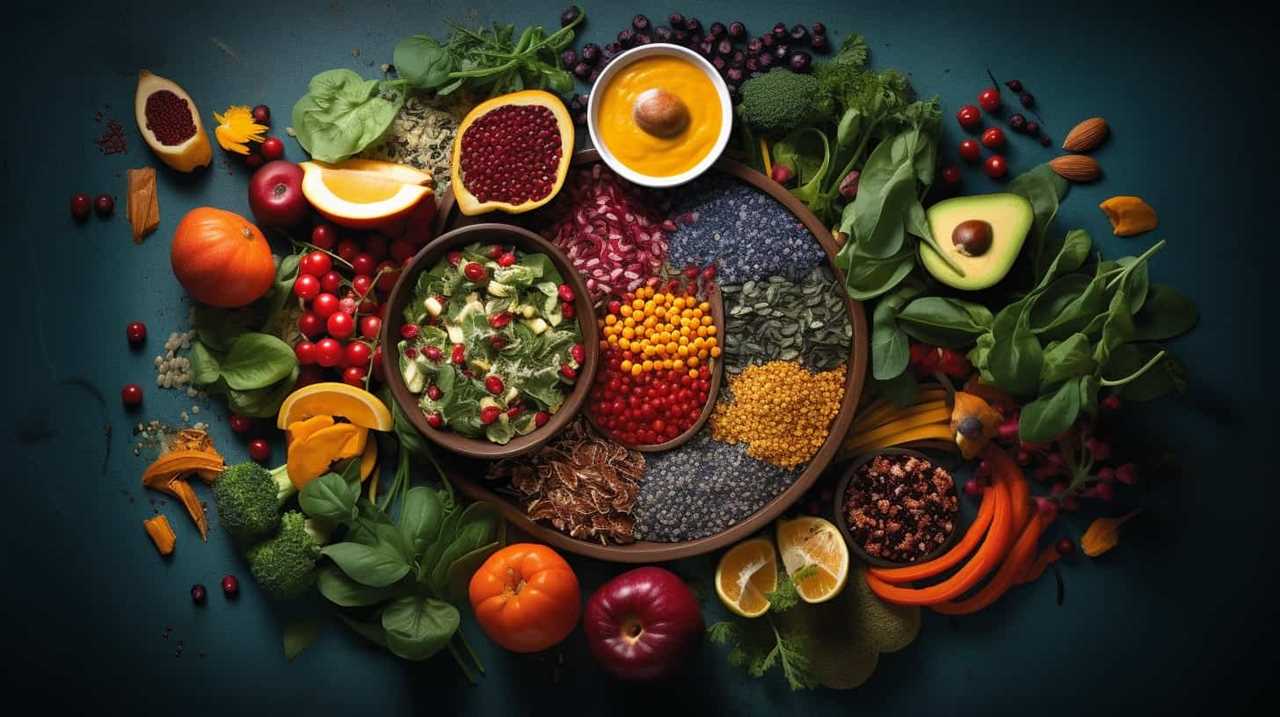
-
Rich in antioxidants: Chai tea contains a blend of spices like cinnamon, cardamom, and cloves, which are rich in antioxidants. These compounds help fight against free radicals and reduce the risk of chronic diseases.
-
Boosts digestion: The combination of spices in chai tea, such as ginger and black pepper, can aid in digestion by increasing enzyme activity and promoting gut health.
-
Supports heart health: Chai tea’s ingredients, like cinnamon and black tea, have been linked to improved heart health by reducing cholesterol levels and promoting healthy blood pressure.
-
Enhances mental well-being: The caffeine in chai tea, coupled with its aromatic spices, can provide a natural energy boost and improve mental focus and clarity.
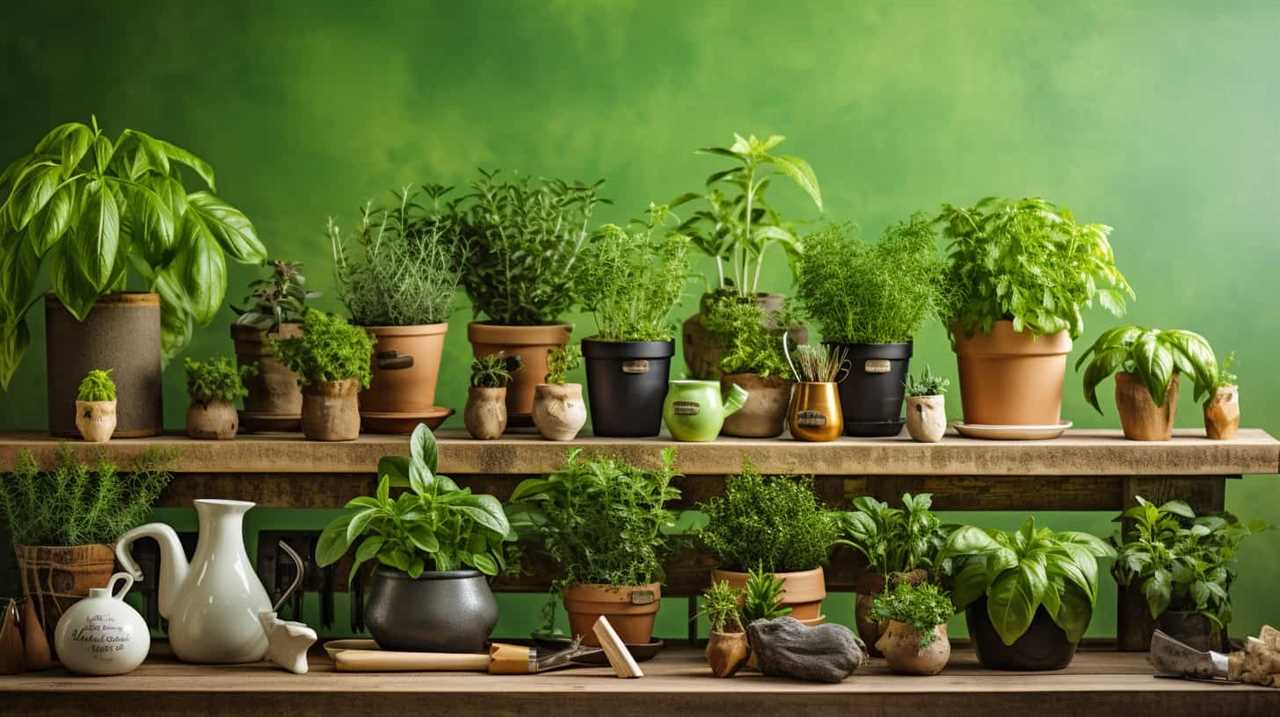
-
Immune system support: Some of the spices in chai tea, like ginger and cloves, have antimicrobial properties that can help strengthen the immune system and protect against infections.
Incorporating chai tea into your daily routine can be as simple as trying different chai tea recipes or substituting it for your regular cup of green tea. Enjoy the flavorful and healthful benefits of this ancient beverage!
Comparison of Fiber Content
After exploring the health benefits of chai tea, let’s now compare the fiber content between chai tea and chia seeds. Fiber is an essential nutrient that plays a crucial role in maintaining a healthy digestive system and preventing chronic diseases. To understand the fiber content of these two foods, let’s take a look at the table below:
| Chai Tea (per 100g) | Chia Seeds (per 100g) | |
|---|---|---|
| Fiber | 0.0g | 34.4g |
As we can see, chia seeds are an excellent source of dietary fiber, providing a whopping 34.4g per 100g. On the other hand, chai tea contains no fiber content. This stark difference highlights the importance of incorporating fiber-rich foods into our diet to meet the recommended daily fiber intake of 25-38g for adults. Adding chia seeds to our meals or snacks can be a great way to boost our fiber intake and promote a healthy digestive system.
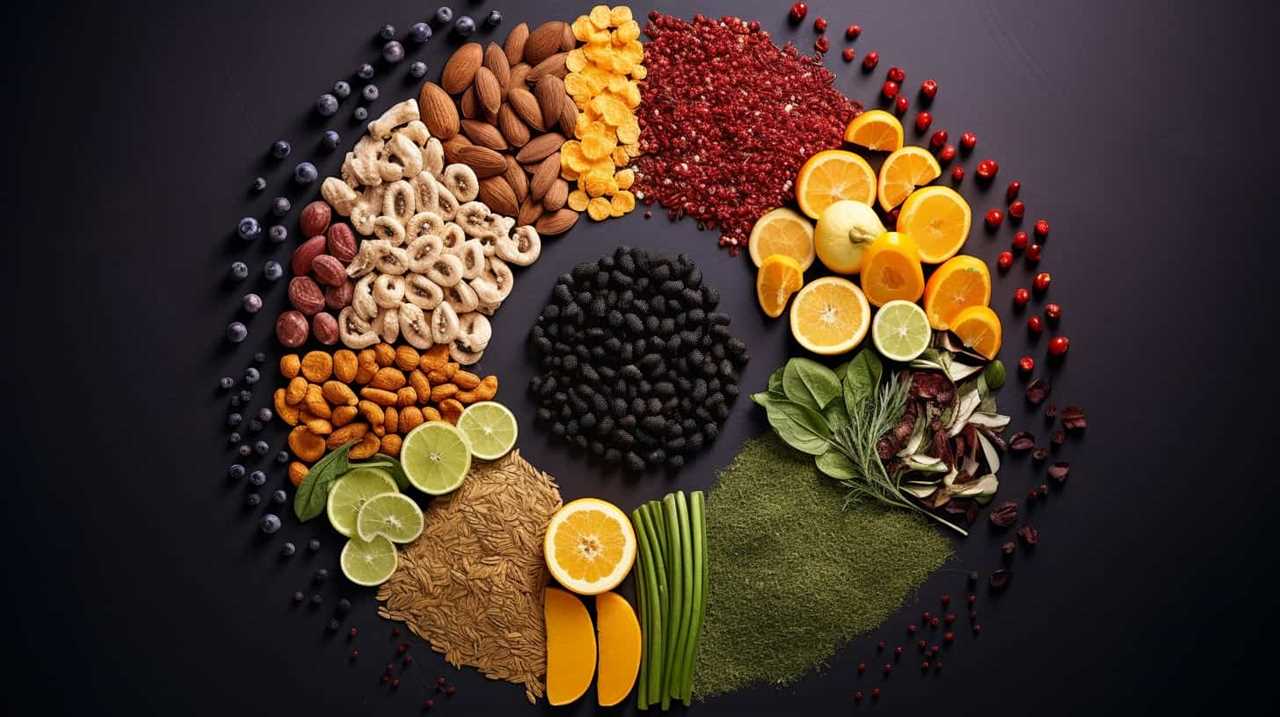
Omega-3 Fatty Acids: Chia Seeds Vs. Chai Tea
Let’s now compare the omega-3 fatty acid content of chia seeds and chai tea, as it plays a crucial role in promoting heart health and reducing inflammation. Omega-3 fatty acids are essential fats that our bodies need but can’t produce on their own. They’ve been linked to numerous health benefits, including reducing the risk of heart disease, improving brain health, and reducing inflammation.
Here are some key points to consider:
-
Chia seeds are one of the best plant-based sources of omega-3 fatty acids. Just one ounce of chia seeds contains about 5 grams of omega-3s.
-
Chai tea, on the other hand, doesn’t contain significant amounts of omega-3 fatty acids. It’s primarily a blend of black tea, spices, and milk.
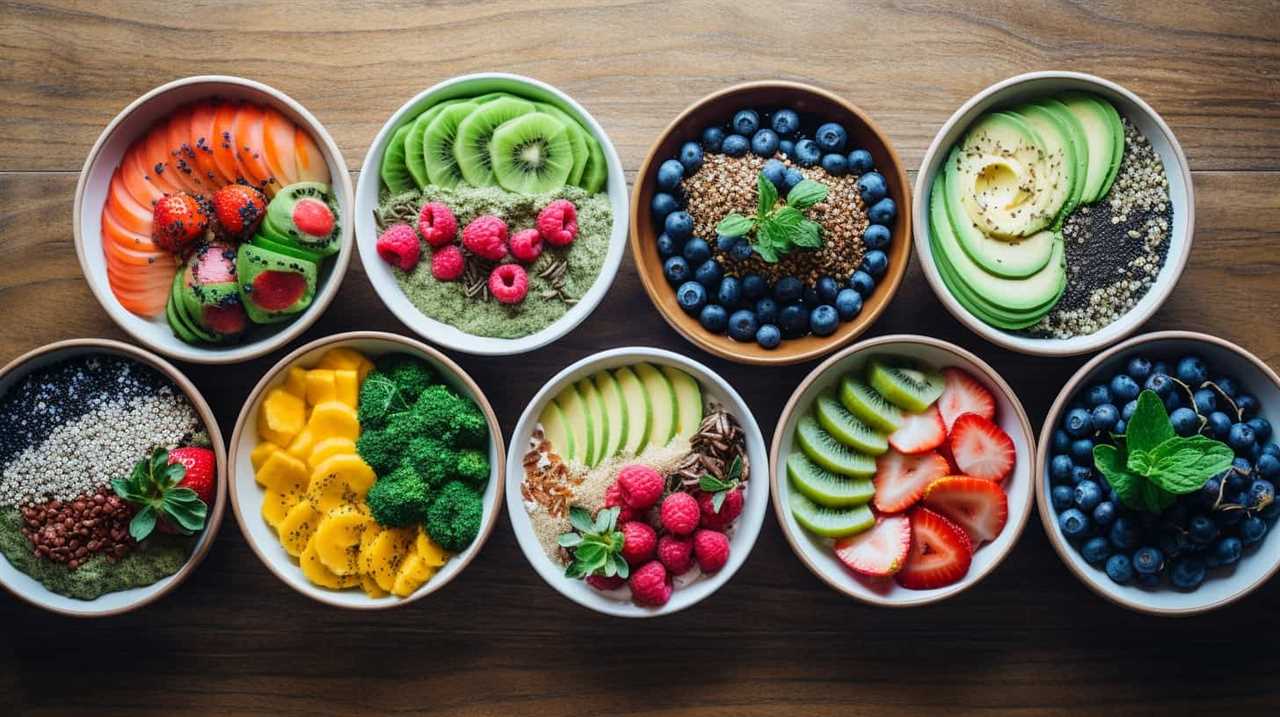
-
The omega-3 fatty acids found in chia seeds are in the form of alpha-linolenic acid (ALA), which needs to be converted by the body into more active forms like EPA and DHA.
-
Consuming omega-3 fatty acids from plant sources like chia seeds can still provide health benefits, but it may be less efficient compared to getting them from animal sources like fatty fish.
-
To maximize your omega-3 intake, it’s recommended to incorporate a variety of omega-3 sources into your diet, including both plant-based and animal-based options.
Now that we’ve compared the omega-3 fatty acid content of chia seeds and chai tea, let’s explore ways to incorporate them into your diet.

Ways to Incorporate Chia Seeds and Chai Tea Into Your Diet
To maximize the nutritional benefits of chia seeds and chai tea, we can incorporate them into our diet in various ways. Chia seeds are versatile and can be added to many recipes. They can be sprinkled on top of yogurt or oatmeal, blended into smoothies, or used as an egg substitute in baking. Chia pudding is a popular and delicious chia recipe that can be enjoyed as a healthy dessert or snack.
When it comes to chai tea, there are different types of flavors to choose from. Traditional chai tea is made with a blend of black tea, spices like cinnamon, cardamom, ginger, and cloves, and milk. However, there are also variations like green chai tea, which uses green tea as a base, and rooibos chai tea, which is caffeine-free.
Incorporating chia seeds and chai tea into our diet not only adds variety and flavor but also provides us with essential nutrients. So, why not try some delicious chia recipes and explore the different types of chai tea flavors to enjoy the benefits they offer?
Frequently Asked Questions
Can Chia Seeds Be Used as a Substitute for Chai Tea in Recipes?
Chia seeds can be a nutritious addition to baking recipes, but they cannot be used as a substitute for chai tea in terms of flavor or beverage preparation. However, there are alternative chai tea latte recipes that incorporate chia seeds for added health benefits.
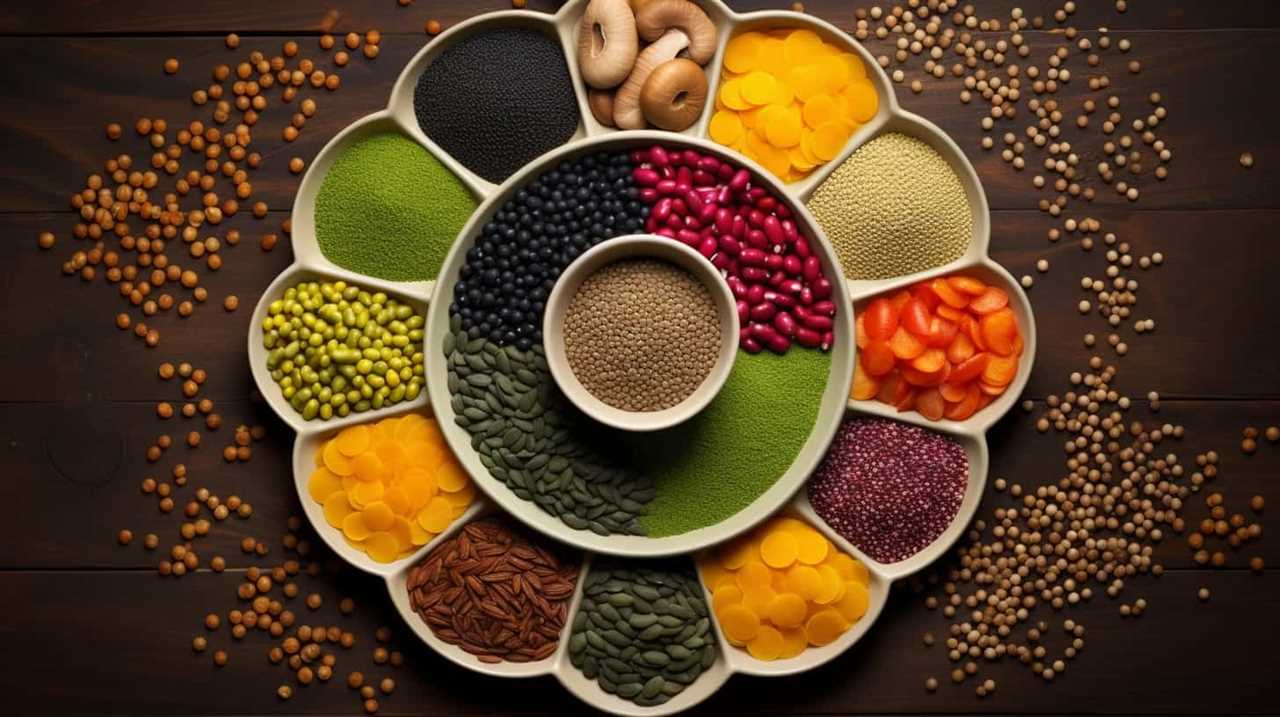
Can Chai Tea Help With Weight Loss?
Chai tea has been studied for its potential as a natural appetite suppressant, aiding weight loss efforts. Additionally, chia seeds have been shown to boost metabolism. Incorporating both into a balanced diet may support weight loss goals.
Can Chia Seeds and Chai Tea Be Consumed Together for Enhanced Health Benefits?
Yes, chia seeds and chai tea can be consumed together for enhanced health benefits. Incorporating chia seeds into chai tea recipes can provide a boost of fiber and omega-3 fatty acids, promoting digestion and overall well-being.
Are There Any Potential Side Effects of Consuming Chia Seeds or Chai Tea?
We researched potential side effects of consuming chia seeds or chai tea. We found information on potential interactions with medications and allergic reactions to chia seeds or chai tea.
Are There Any Specific Quantities or Recommended Daily Intake of Chia Seeds and Chai Tea for Optimal Health Benefits?
For optimal health benefits, it is important to consider the recommended daily intake of chia seeds and how to incorporate chai tea into your daily routine. Both can be beneficial, but moderation is key.
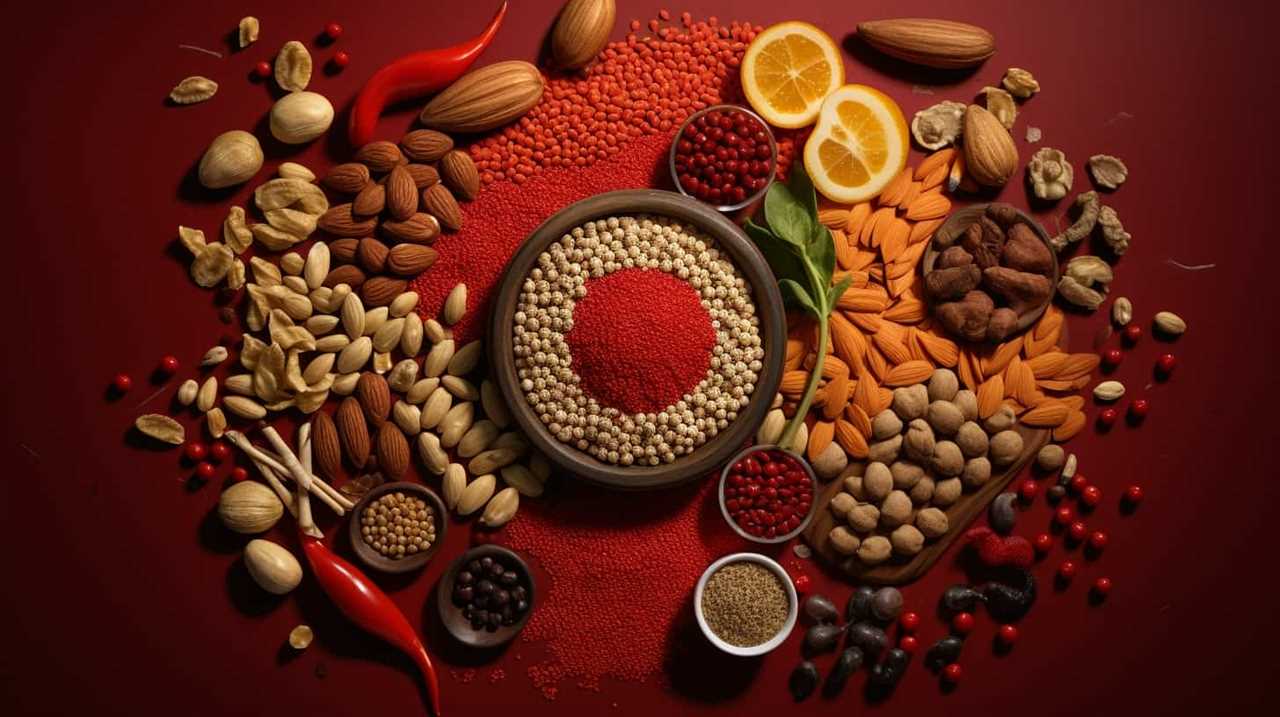
Conclusion
In conclusion, both chia seeds and chai tea offer numerous health benefits.
While chia seeds are rich in fiber and omega-3 fatty acids, chai tea provides a range of antioxidants and potential anti-inflammatory effects.
Interestingly, a study found that consuming chia seeds daily for 12 weeks resulted in a significant reduction in waist circumference and body weight.
Therefore, incorporating chia seeds and chai tea into your diet can be a great way to improve your overall health and well-being.
